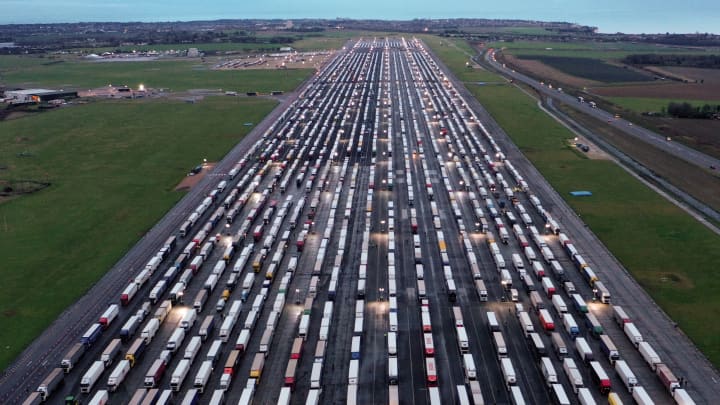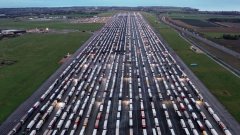
The CEO of a firm focused on autonomous trucking believes huge change is coming to the sector — with humans and technology working hand in hand to transform the way goods are delivered.
Speaking at CNBC's East Tech West conference in the Nansha district of Guangzhou, China, KargoBot chief Junqing Wei said his business is looking to "revolut[ionize]" freight transportation.
"We believe that a cargo mobility revolution is going to happen in the next 10 years, that logistics will be very different from what it is today," he added.
Wei said KargoBot was incubated by the Chinese ride-sharing powerhouse Didi for the past three years. KargoBot, he said, already has more than 100 autonomous driving trucks on the road, mainly on routes in Inner Mongolia, northern China.
"They have been automatically driving and also, they are delivering goods, they are actually doing commercial operations already."
The logistics market, Wei said, is worth more than $1 trillion, with KargoBot focusing on the delivery of raw material for manufacturers and factories.
Wei shared what he learned from operations in Inner Mongolia. "There are routes with maybe 200 kilometers, but there are over 1,000 trucks running on the routes, back and forth every day," he said.
That makes the area "a very good fit for autonomous driving." On top of that, those routes were in "a little bit of a rural area," meaning there's a lower chance of vehicles coming across "very complicated pedestrian crossings or vulnerable road users."
Despite those beneficial characteristics, Wei acknowledged the challenges, which include herds of sheep and "huge amounts of dust on the road" affecting visibility. Toll stations are another issue.
"When we first deployed the system … two to three years ago, we didn't realize those are the huge challenges," Wei said.
"But after this experience, we found that okay, if a self-driving truck driving on the road [is] stuck at the toll station, that's a disaster, right? You've basically blocked the road."
That led to some innovations and tweaks in how the company's technology operates.
"Because of that, we kind of invent[ed] a new way of operating the Level 4 system — we've called it [the] 'hybrid driverless solution'," Wei said.
"Level 4" refers to . At Level 4, automated driving features can drive a vehicle "under limited conditions and will not operate unless all required conditions are met."
Unlike Level 3, the , automated driving features at Level 4 "will not require you to take over driving." At Level 3, a human must take control of driving when requested.
In practice, KargoBot's system works by combining technology and human intelligence.
"All those Level 4 trucks will be running by themselves, and we kind of 'group' them together and we give the leading truck a human driver … to guide the whole fleet," Wei said, adding that this method was deployed in Inner Mongolia.
"That's how we are able to commercially operate ... over 100 trucks there," he said.
Real-world deployment came with some big lessons.
"I've been developing self-driving for the last 15 years," Wei said.
"But what we realized is [with] self-driving, the actual target, the right target, should not be to 100% replace human drivers or human operators," he added.
"It's to actually … augment their capability. I think that's the huge lessons we learned, and we believe that that's the path to go."




